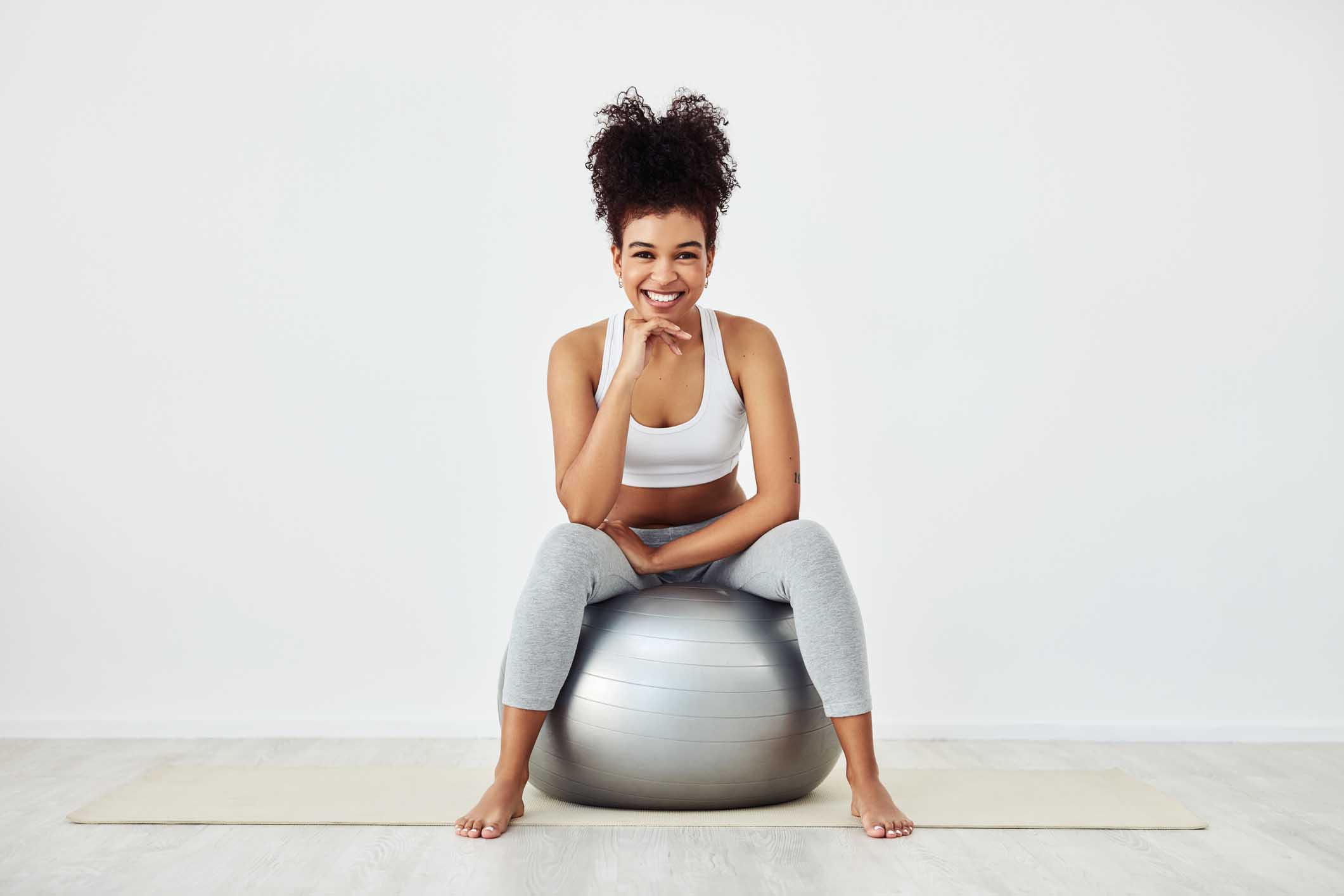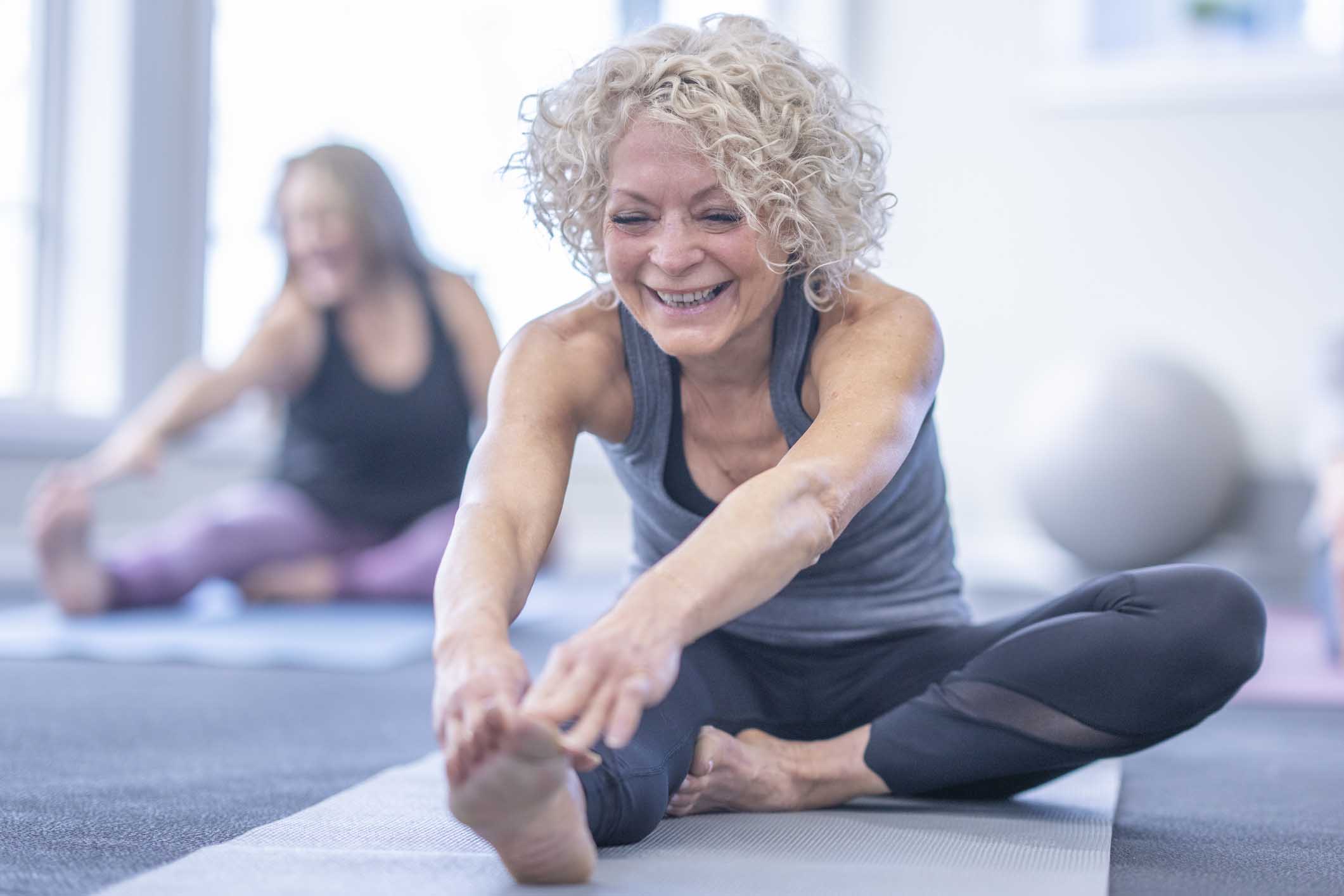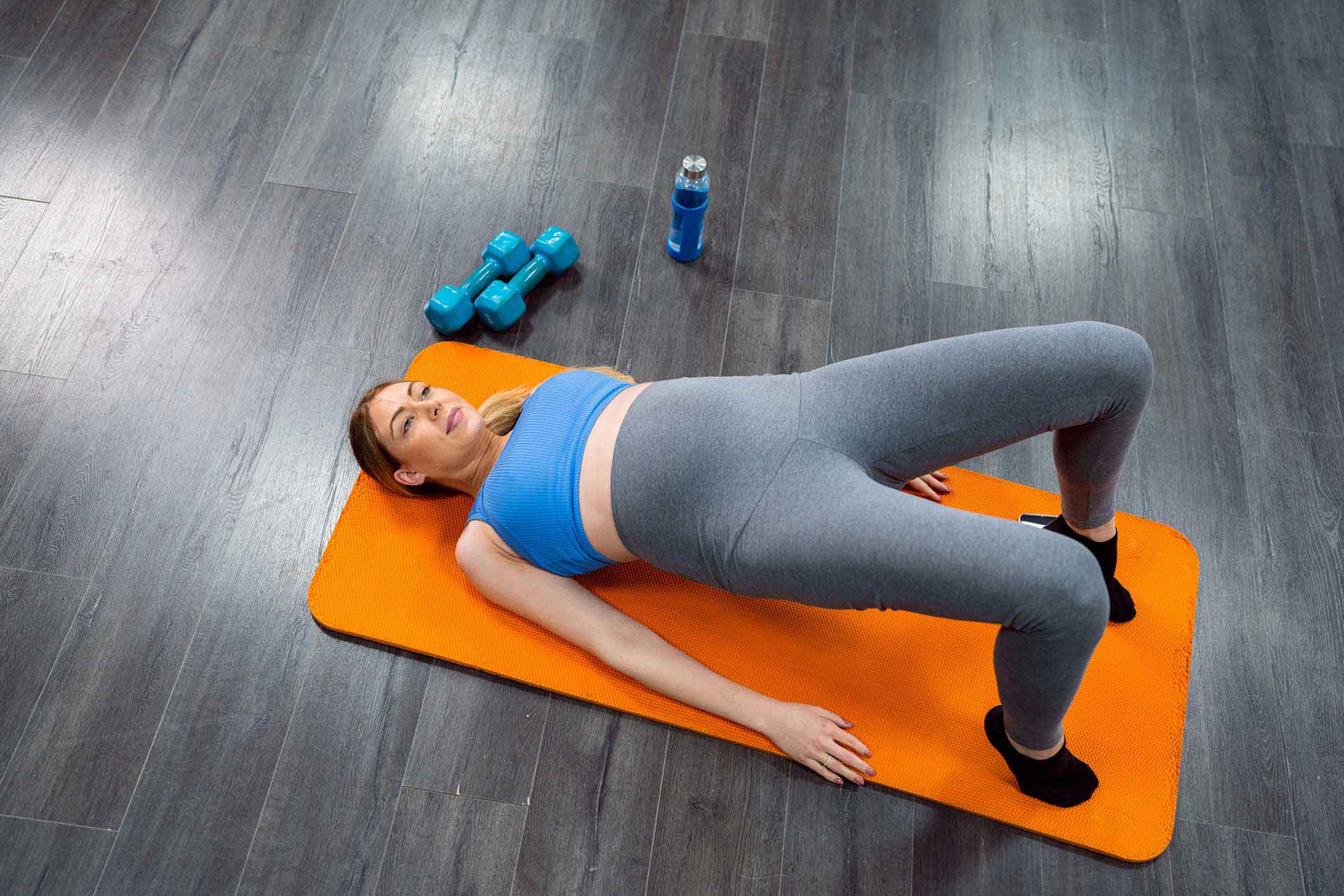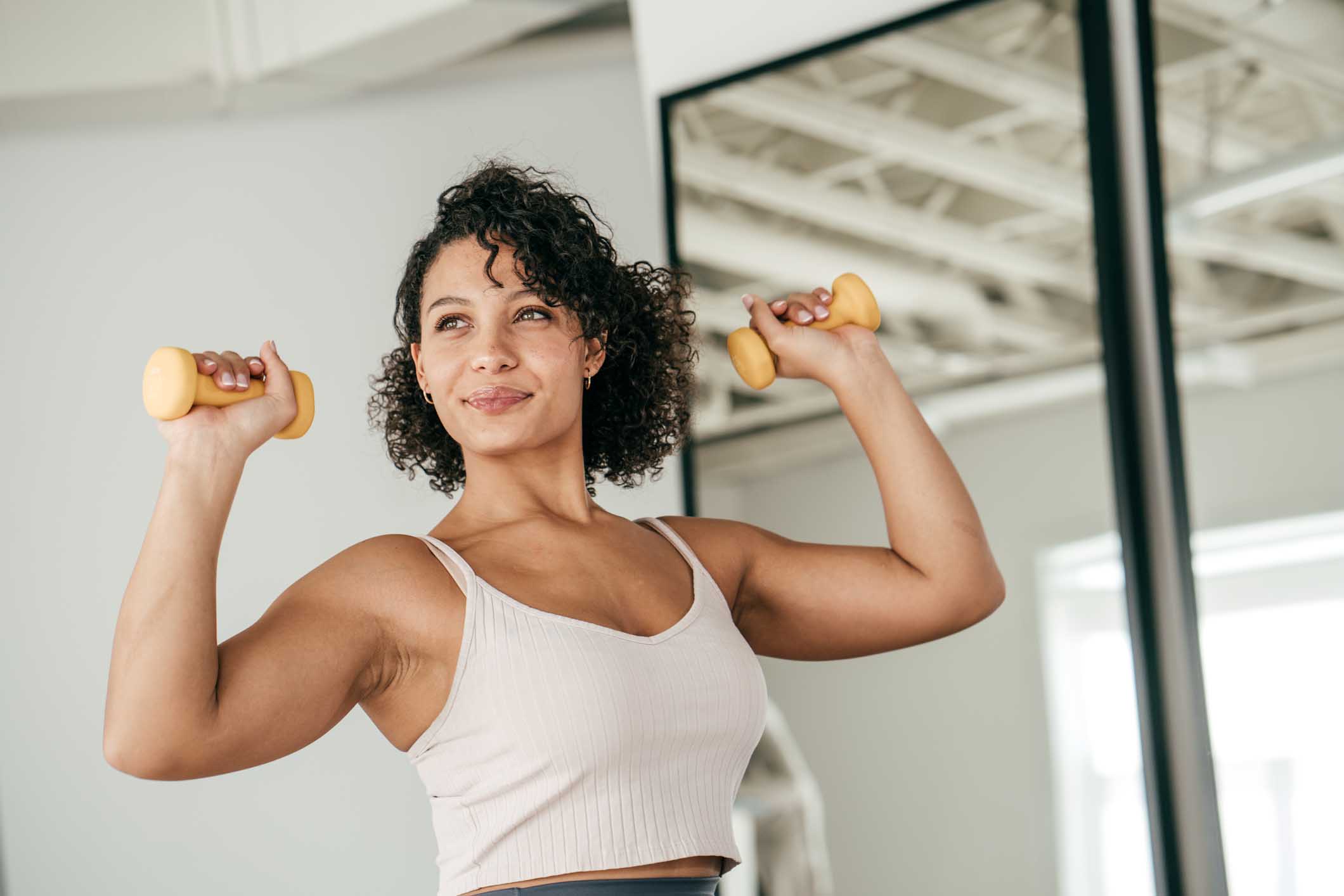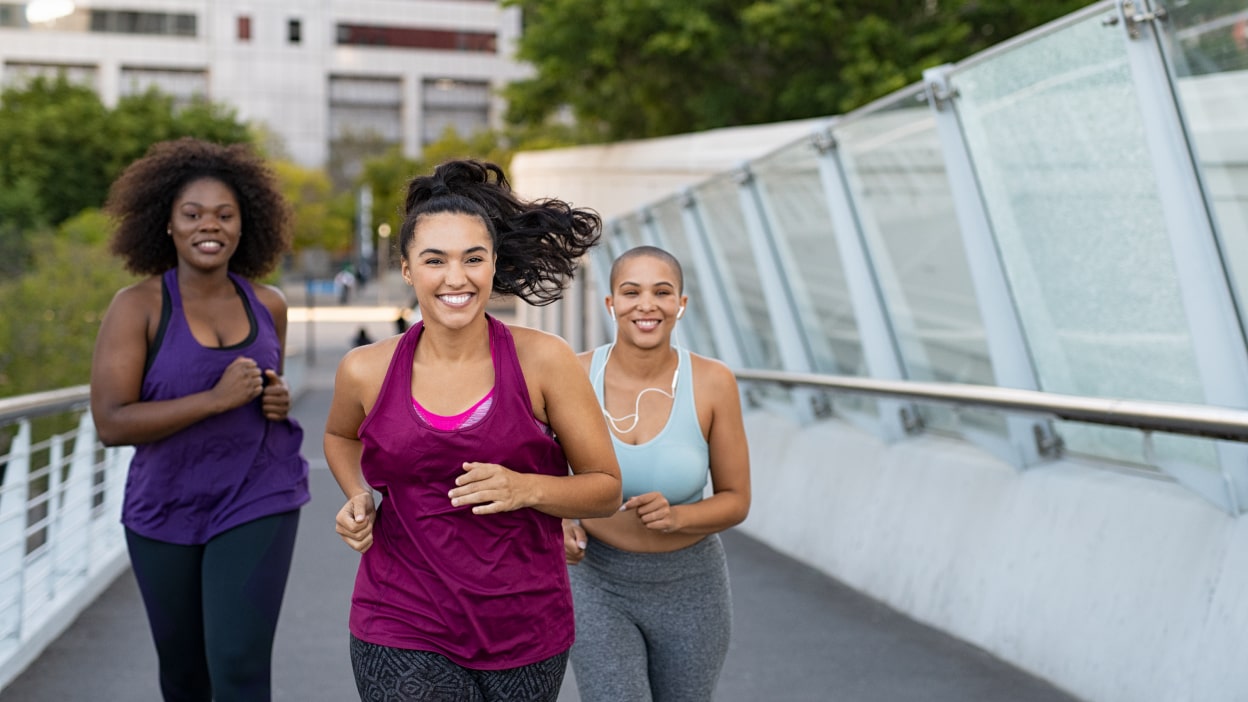4 Exercises to Strengthen the Pelvic Floor, Beyond Kegels
4 Exercises to Strengthen the Pelvic Floor, Beyond Kegels
There are several exercises beyond Kegels that can help strengthen your pelvic floor. Although Kegel exercises are the foundation of pelvic floor muscle strengthening, I also recommend incorporating other movements that can have a positive impact on your pelvic floor.
To help my clients better understand how exercises can strengthen their pelvic floor as well as the importance of proper form and movement to avoid injury, I always start by walking them through pelvic floor anatomy. The pelvic floor is made up of three muscle layers:
- Layer 1: Supports your openings (urethra, vagina, and anus), maintains sphincter tone to prevent incontinence, and contributes to sexual function (orgasm)
- Layers 2 and 3: These muscles support:
- Additional continence function
- Organs (bladder, uterus, and rectum)
- Sexual function (orgasm)
- Posture
- Blood and lymphatic flow
For all of the following exercises, you will need to incorporate a pelvic brace since that is the best way to strengthen the pelvic floor. A pelvic brace is a pelvic floor muscle contraction that pulls from the anus towards the urethra and meets the deep abdominal muscles as the lower abs flatten and the waist narrows. Think of it like drawing your navel towards your spine. This exercise can be done in any position, but is easiest to perform on your back in preparation for additional exercises.
Now let’s learn my top 4 exercises to strengthen pelvic floor muscles without Kegels! These exercises target different muscles, all of which can be found in the Appendix at the end of this post. Please reference the Appendix to get to know your muscles better!
Exercise 1: Ball Squeeze With a Bridge
Lie on your back with your knees bent, feet flat on the ground, and your spine in a neutral position.
- Inhale to expand your ribcage – you’ll feel your pelvic floor drop and lengthen towards the floor
- Exhale, then perform your pelvic brace. Squeeze a ball (or yoga block/small pillow) between your knees as you lift your hips off the floor and up toward the ceiling
- Inhale, hold this position at the top
- Exhale again and re-engage your pelvic brace as you return/lower down your hips to the start position
- Perform 15-20 repetitions, three times per week
- Muscles targeted: Pelvic Floor, Transverse Abdominus, Multifidi, Adductors, Hamstrings and Gluteus Maximus
Not so bad, right? Now get ready for Exercise 2!
Exercise 2: The Marching Bridge
Lie on your back with your knees bent, feet flat on the ground, and your spine in a neutral position.
- Bring your legs together, as if they are coming together as one leg
- Inhale and expand your ribcage and feel your pelvic floor drop and lengthen towards the floor
- Exhale and perform your pelvic brace: squeeze your knees together as you lift your hips off the floor and up toward the ceiling
- Inhale and hold the pose at the top, feeling your ribcage expand and your pelvic floor soften
- Exhale again making sure to keep your pelvis level in a straight line with your knees and shoulders
- Raise your left foot 2 inches off the ground
- Inhale and tap it down
- Exhale and repeat for at least 10-15 repetitions (left foot only)
- Repeat on the right foot for 10-15 repetitions
- Perform three times per week
- Muscles targeted: Pelvic Floor, Transverse Abdominus, Multifidi, Adductors, Hamstrings, Gluteus Maximus, Gluteus Medius and Deep Hip Rotators
Exercise 3: Heel Press to Ceiling
Start on your elbows and knees. Make sure elbows are directly under shoulders and knees are directly under hips as you face the floor.
- Inhale, feeling your ribcage expand and your pelvic floor drop and lengthen
- Exhale and perform your pelvic brace, clench your right gluteal muscles, and lift your right leg up and back towards the ceiling, leading with your heel. It is important to keep your right knee bent at a 90-degree angle and feel your heel pressing up to the ceiling
- Inhale and slowly lower your leg and tap your knee on the ground, keeping your pelvic brace contracted
- Exhale and re-engage your gluteal muscles as you press your heel back up to the ceiling
- Make sure to keep your core engaged so your spine remains stable during the exercise, focusing just on the hip motion
- Perform 10-15 repetitions on each side, three times per week
- Muscles targeted: Pelvic Floor, Transverse Abdominus, Multifidi, Gluteus Maximus, Gluteus Medius and Hamstrings
You’ve made it to the last exercise! Pat yourself on the back because you are doing a fabulous job! Now let’s finish strong.
Exercise 4: Side Lying Elevated Hip Rotations
Lie on your side with hips and knees stacked, so that your feet are on the ground, but your upper legs are slightly off the ground at a 30-degree angle. Then create a small space (a “crawl space for ants”) on your lower side, so that you are pulling your spine into a neutral position.
- Inhale, feeling your ribcage expand and your pelvic floor lengthen
- Exhale and perform your pelvic brace, lift your top leg so that it is slightly higher than your pelvis
- Inhale and hold the pose at the top, feeling your ribcage expand and your pelvic floor soften
- Exhale and re-engage your pelvic brace and perform small hip rotations, pointing the knee of the top leg to the ceiling, then toward the floor, for 5 to 6 repetitions
- Inhale and return to the start position
- Lie on your other side and repeat the exercise, so that your other leg is now stacked on top
- Perform 3 sets of 5 to 6 repetitions on each side, three times per week
- Muscles targeted: Pelvic Floor, Transverse Abdominus, Multifidi, Gluteus Medius and Deep Hip Rotators
While these exercises can ultimately help you learn how to strengthen pelvic floor muscles and reduce bladder leaks, you might still experience leaks while practicing the movements. I encourage my patients to wear bladder leakage pads since they can help keep you comfortable while you are working on your pelvic floor strength. For flexibility and ultimate comfort, I point my patients towards the Poise© Ultra Thin pads.
You did it! You successfully learned how to strengthen pelvic floor muscles without Kegels. Now that you understand other ways to achieve a strong pelvic floor beyond just Kegels, you are ready to work towards your pelvic health goals. Always consult with a doctor if you have other questions along your journey.
- Pelvic Floor
- Lies at the base of the pelvis
- Supports pelvic organs, maintains sphincter tone, contributes to sexual function, helps support posture and aids in blood and lymphatic flow
- Transverse Abdominus
- Attaches from your ribs to your pelvis and wraps around your waist like a ‘corset’
- Aids in supporting your posture, preventing and reducing lower back pain, and working your pelvic floor to support the functions above
- Multifidi
- These are the ties of your ‘corset’
- Aids in transverse abdominus function
- Adductors
- Attaches from the pelvis to the femur (upper thigh bone) and brings the leg towards the midline of the body
- Helps facilitate a pelvic floor muscle contraction and helps in pelvic stabilization
- Gluteus Maximus
- Attaches at the sacrum, pelvis and the back of the femur and extends the leg
- Helps facilitate a pelvic floor muscle contraction and helps in pelvic stabilization
- Hamstrings (semimembranosus and semitendinosus muscles)
- Attaches from the pelvis to back of the tibia (lower leg bone) and extends the hip and flex (or bend) the knee
- Aids in pulling the pelvis back to a more neutral, optimal position, which is beneficial especially in those with a very anteriorly tilted pelvis
- Gluteus Medius
- Located on the side of the pelvis and moves the leg away from the body (abduction)
- Important in hip and pelvic stabilization
- Deep Hip Rotators
- Includes the piriformis, obturator internus, obturator externus, quadratus femoris, gemellus superior, gemellus inferior
- Rotates the hip externally or internally
- Obturator internus directly attaches to the 2nd and 3rd layer of pelvic floor muscles
- Obturator internus helps facilitate a pelvic floor muscle contraction during hip external rotation
# # #
Recommended Products
Absorbency Level
Absorbency Level
